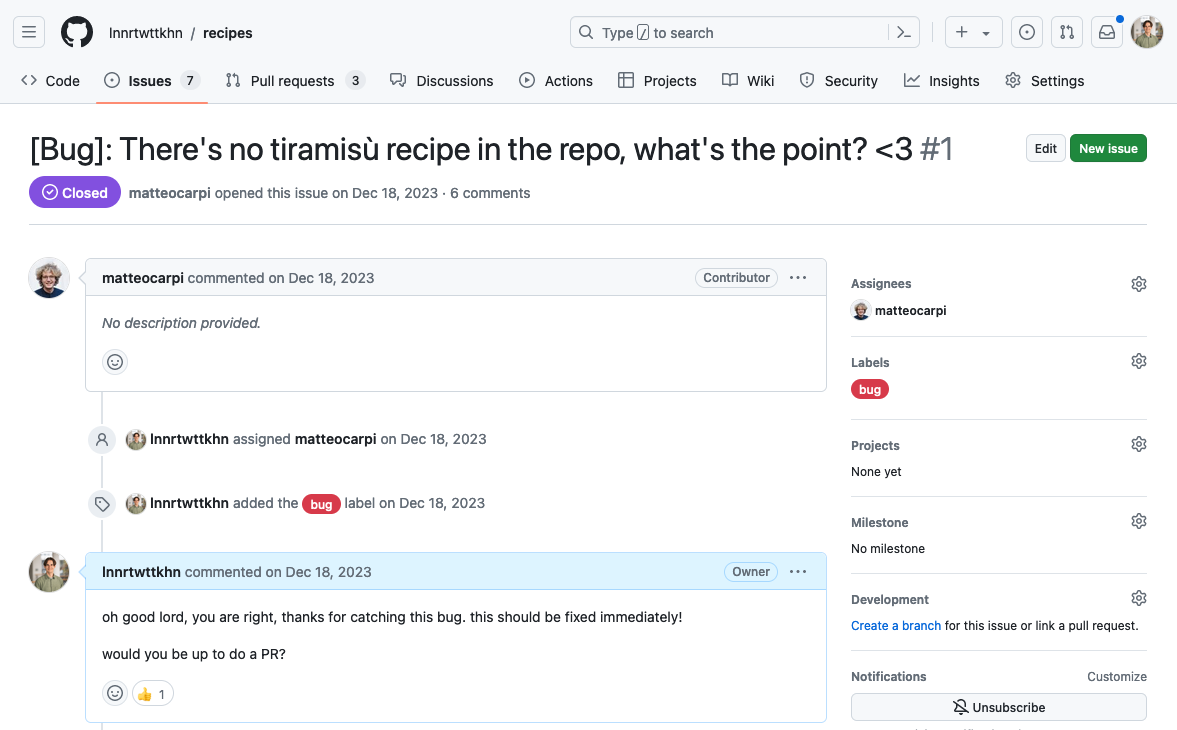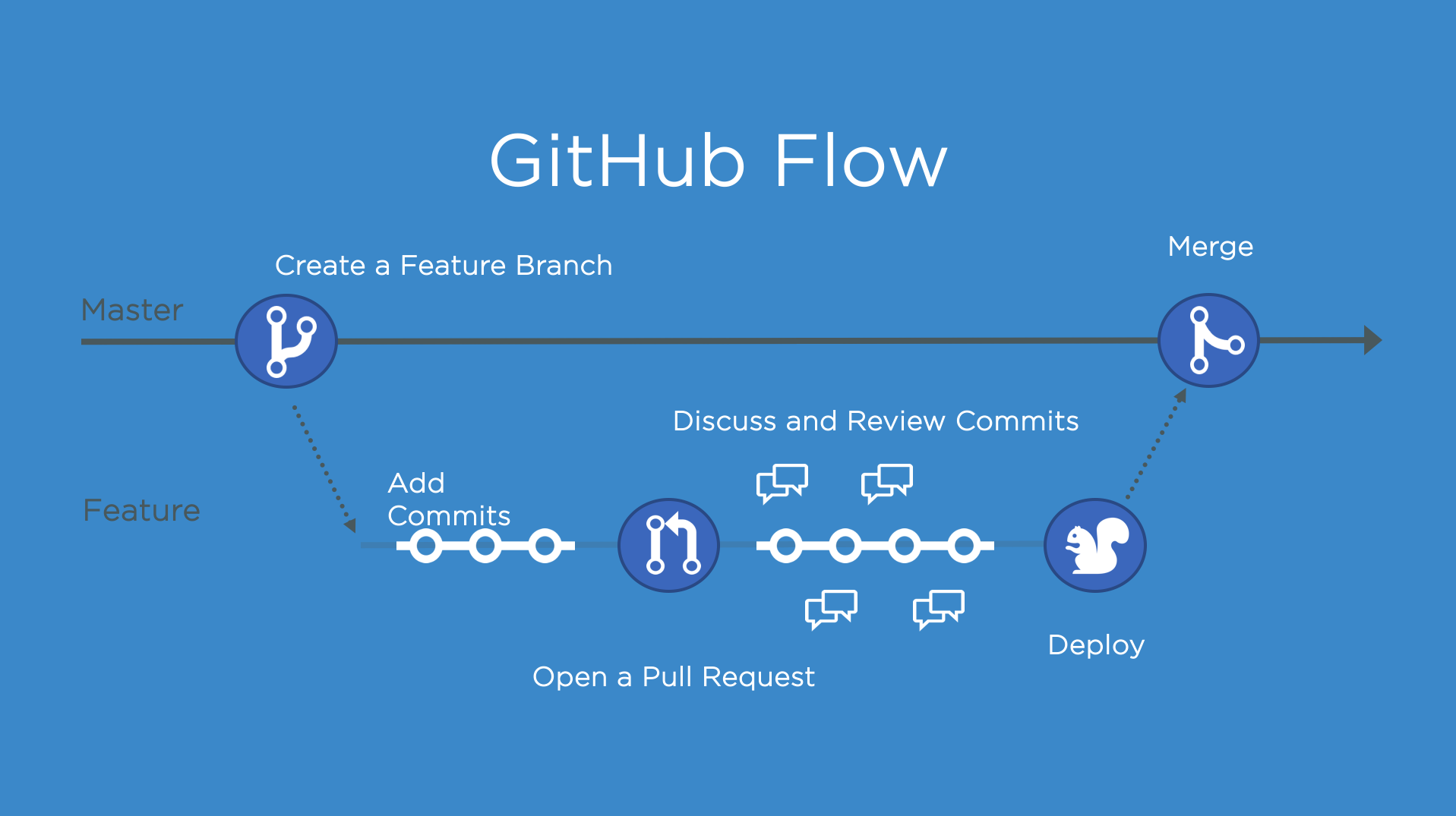| Command | Description |
|---|---|
git remote |
Manages remote repositories |
git clone |
Creates a local copy of a repository |
git pull |
Fetches and merges the latest changes from a remote repository into the current branch |
git fetch |
Updates remote tracking branches |
git push |
Uploads local commits to a remote repository |
Session 7: Collaboration on GitLab / GitHub
Track, organize and share your work: An introduction to Git for research
Course at Max Planck Institute for Human Development
15:00
1 Last session: Integration with GitLab / GitHub
Last sessions: Learning objectives
After the last session, you should now be able to answer the following questions / do the following:
💡 You can connect your local Git to a remote repository service.
💡 You can create a remote repository.
💡 You can pull and push changes to and from a remote repository.
Last session: recipes project
At the end of this session, you should have accomplished the following:
- You connected your GitHub account to your local Git.
- You created a new GitHub repository and uploaded (i.e., “pushed”) your
recipesproject. - You collaborated on a shared project by adding and committing changes to a partner’s repository.
- You created and reviewed a pull request to integrate new content from a partner.
Optional:
- You cleaned up your project by deleting unnecessary files and branches.
- You created a short
README.mdfile in your repository.
Please keep the recipes folder! We will continue to use it in the following sessions.
2 This session: Collaboration on GitLab / GitHub
This session: Collaboration on GitLab / GitHub

Image from Techdobz
This session: Issues

Reading
https://lennartwittkuhn.com/version-control-book/chapters/github-advanced.html
Learning objectives
GitHub - Advanced
💡 You can fork a repository.
💡 You know the purpose and components of a Pull Request.
💡 You can create a Pull Request from a forked repository.
💡 You know how to collaborate using the popular workflow strategy GitHub flow.
💡 You know the purpose and components of a README file.
💡 You can protect your main branch.
Issues
💡 You understand the purpose of GitHub Issues.
💡 You can create and manage Issues.
💡 You can reference an Issue in another issue.
💡 You can close an Issue with a commit or pull request.
Cheatsheet
GitHub Flow

Tasks
In this session, you will work on the following tasks:
- Reading: Read the chapter “GitHub - Advanced” in the Version Control Book.
- Implementation: Try out the commands in the chapter.
- Exercises: Work on the exercises for the
recipesproject. - Quiz: Test your knowledge with the quiz.
As always:
- Try out the commands of this session and play around with them.
- Check whether you have achieved the learning objectives.
- Ask questions!
- Let’s git started!
recipes project
At the end of this session, you should have accomplished the following:
- You forked a public / internal
recipesrepository of another course participant. - You opened an Issue in another repository.
- You opened a pull request with changes that “fix” the Issue you opened.
Please keep the recipes folder! We will continue to use it in the following sessions.
Exercises
1. “Public” collaboration with pull requests (using a Fork)
- Find out what forking is
- Fork the recipes repository of another course participant (who is not your partner from the previous exercise)
- Create an issue, suggesting a missing recipe
- Create an issue in your partner’s repository (maybe their repo is missing a great recipe?)
- Repeat the steps from the previous exercise using the forked repository:
- Clone the forked repository into a sensible location
- Create a new branch and create one or multiple commits “fixing” the issue that you opened
- Follow the contributing guide in Lennart’s repo to create a new recipe
- Push your changes to GitHub
- Create a pull request with your changes (hint: from the fork to the original repo) and refer to the issue in your pull request
2. Review pull requests in your repository
- View any pull requests that are created in your
recipesrepository. - Review the changes made by the contributor in the pull request.
- If needed, discuss additional changes with the contributor in the pull request.
- Close the pull request by merging the proposed changes.
🚀 Optional: Practice forking on GitHub
- Repeat the entire forking workflow (see task 1 above) with Lennart’s
recipesrepository.
Version Control Course
